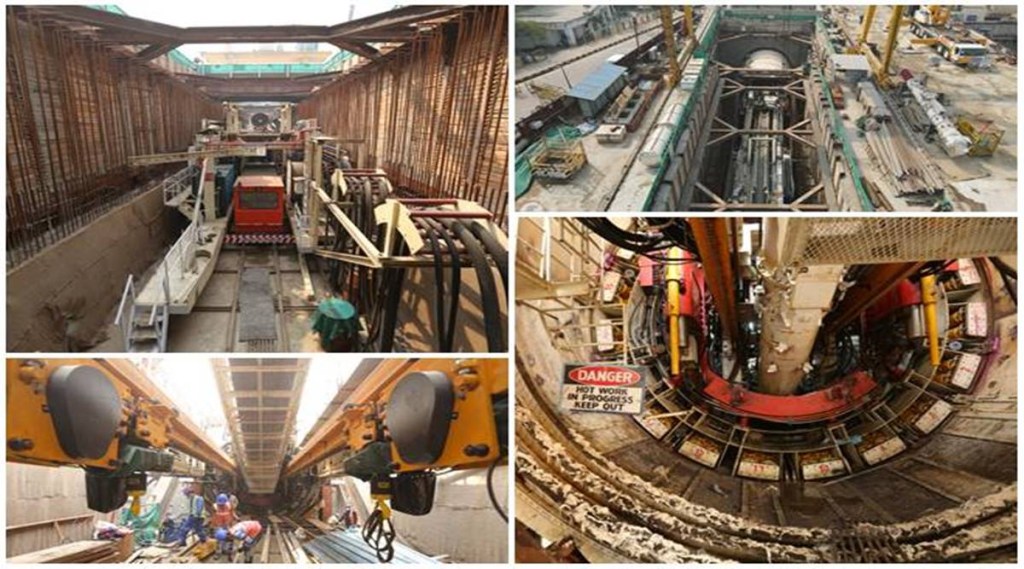Delhi-Meerut RRTS: The work of tunneling has been commenced at Anand Vihar for underground construction of the country’s first regional rail corridor being implemented from Delhi to Ghaziabad and Meerut. About 90 meters long, TBM (Tunnel Boring Machine) has started constructing a tunnel for the upcoming Regional Rapid Transit System corridor from Anand Vihar towards the side of New Ashok Nagar. The TBM comprises a cutter head, erector, screw conveyer, front shield, middle shield, tail shield, and various other parts that help in boring the tunnels efficiently. Tunnel rings are being built with the help of tunnel segments by the Tunnel Boring Machine. Generally, seven tunnel segments are used to make a tunnel ring.
For this section, tunnel segments are being constructed at NCRTC’s casting yard. With a diameter of 6.6 metres, the tunnels of RRTS are bigger compared to other Indian Metro systems due to larger rolling stock with a higher design speed of 180 Km per hour RRTS trains. It will help in minimizing the air pressure as well as discomfort to passengers due to the higher train speed. For the first time in India, the tunnel of 6.5-meter diameter is being constructed in a mass transit project. This particular Tunnel Boring Machine will develop around 3 kilometres of the tunnel from Anand Vihar towards the side of New Ashok Nagar. Currently, the retrieving shaft for this machine is under construction at Khichripur near New Ashok Nagar.
Four Tunnel Boring Machines are to be launched from Anand Vihar station. Two of the TBMs for a drive from Anand vihar towards the side of New Ashok Nagar and two TBMs for a drive from Anand vihar towards the side of Sahibabad. At the north side of Anand Vihar, the construction of other launching shafts for TBM launching towards the Sahibabad side is underway. The Tunnel Boring Machines from Anand Vihar to Sahibabad will construct around 2 kilometres of tunnels each. At present, the retrieving shaft of the same is under construction at Vaishali.
The RRTS underground stretches will have twin separate tunnels for the trains’ to and fro movement. Various safety measures are being implemented to ensure the safety of commuters. Provisions of emergency escapes have been made for the safety of commuters in case of any emergency. Also, there will be a cross-passage at around every 250 metres. Some of the major reasons behind the implementation of this project are decongestion of the national capital, reducing vehicular traffic and air pollution, as well as balanced regional development. Construction is in full swing on the 82 Km long Delhi-Ghaziabad-Meerut RRTS corridor. The RRTS corridor will have as many as 25 stations, including two depots as well as one stabling yard.
So far, a viaduct of 18 kilometre, of priority section with nearly 1400 piers has been constructed. The Foundation work has been completed for 80 per cent of the RRTS corridor. The 17 kilometre long priority section from Sahibabad to Duhai is scheduled to be operational by March 2023 and trial runs are likely to start this year. The complete RRTS corridor is expected to be opened by 2025.

